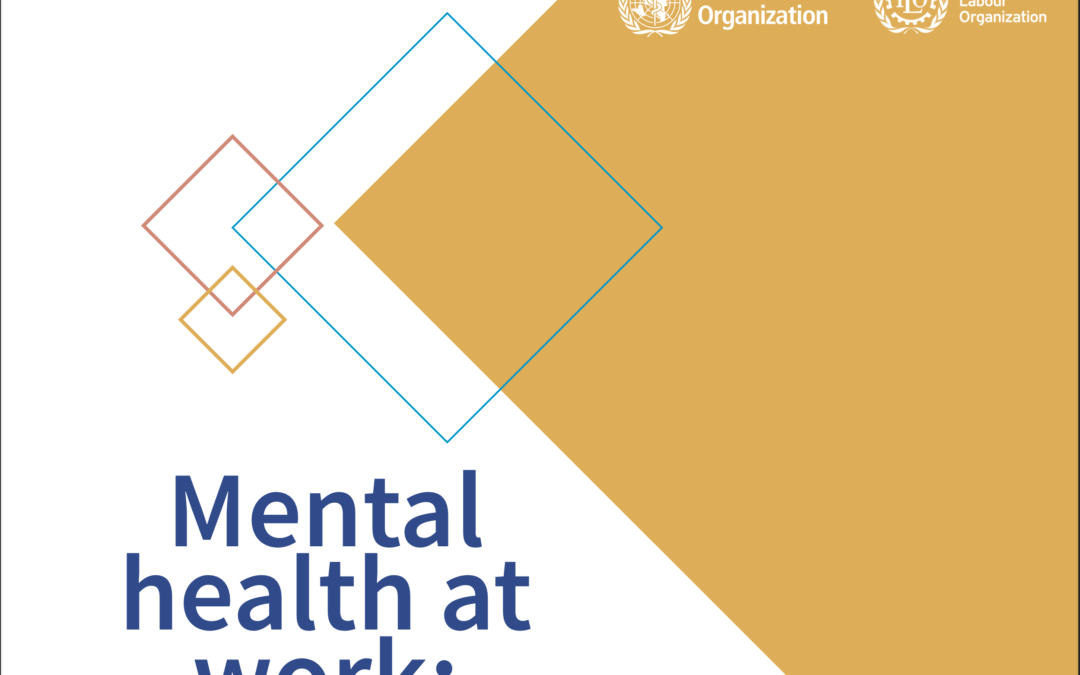The WHO is shining a much-needed light on mental health in the workplace this month with the launch of its global guidelines.
To date health and safety legislation has done a good job of protecting our physical health. But there has been little in the way of globally recognised guidelines that focus primarily on our mental health at work. These guidelines highlight how closely work and mental health are intertwined, recognising that all workers have the “human right to good health” and to work in a “safe and healthy environment”.
WHO’s Chief Scientist, Soumya Swaminathan, acknowledges that our world of work is very different now. Many global factors have necessitated fast-pace change in the way and where we work. Inevitably, such uncertainty and disruption has impacted our mental wellbeing. In our opinion, the publication of these important guidelines couldn’t be more timely!
Governments and employers are encouraged to take action around the following three areas:
- PREVENT
“12 billion working days are lost every year to depression and anxiety”
Through thorough assessment organisations must uncover psychosocial risks to employees that can lead to mental ill-health or exacerbate conditions. Working long hours, under use of skills or lack of autonomy are some of the examples cited as potential risks. These can be mitigated with interventions that will ultimately reduce emotional distress and improve employee job satisfaction and more besides.
- PROTECT & PROMOTE
Our organisations become better and more productive places to work when all stakeholders understand mental health.
WHO advocates an evidence-based approach so that managers receive comprehensive training in mental health to help them spot early warning signs of emotional distress in staff, raise awareness and create a supportive culture. In so doing they will learn to recognise when they themselves need support and healthy leadership is encouraged.
The WHO guidelines don’t just limit training to leaders but spells out that all workers should have the opportunity to improve their mental health literacy. A further evidence-based intervention for individuals should also be available to help build emotional resilience and manage stress, with access to psychological treatment where appropriate.
- SUPPORT
“15% of working-age adults had a mental disorder in 2019”
WHO have not overlooked the large proportion of working-age adults who live with a mental health condition. They highlight that with the right support, these individuals can thrive and be fulfilled at work, and thus contribute positively to the world economy.
WHO suggests “reasonable accommodations at work” should be considered alongside evidence-based return-to-work programmes. They also purport the benefits of supported employment initiatives which drive economic and vocational inclusion.
A rational approach to the WHO recommendations is to integrate mental health into existing occupation safety and health (OSH) management systems. Many organisations are part of the way there if they have already rolled out a mental health strategy or started work on ISO 45003.
If there is some hesitancy from senior leadership owing to the investment that may be required then WHO reassure that the “indirect costs of reduced productivity often far outstrip the direct costs of care”.
Together with our HR colleagues, we wholeheartedly welcome these WHO guidelines that aim to prevent mental ill-health, protect employees, promote awareness of mental health and support staff to thrive in the workplace.

